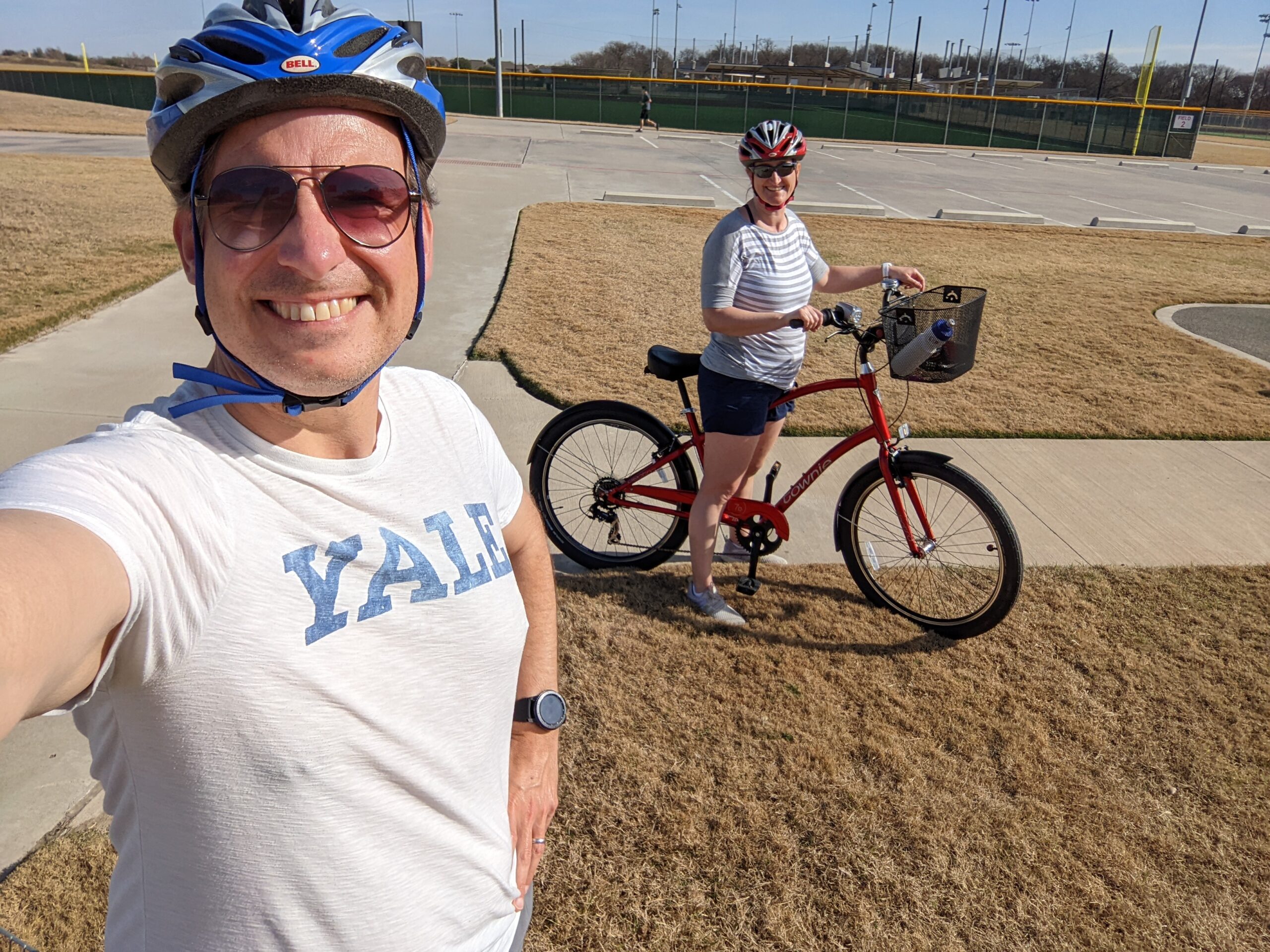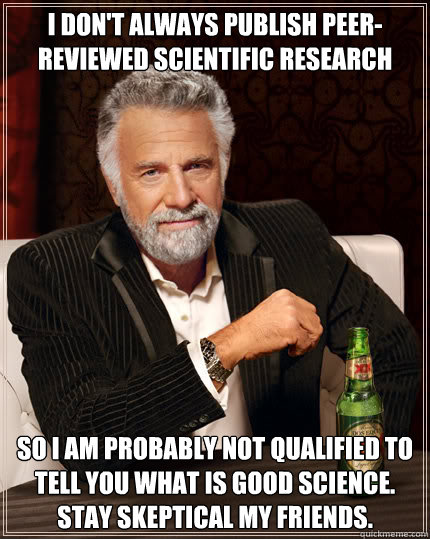I’m having one of those moments of extreme clarity. Ever have those? I can’t say what sparked it. Perhaps it was a wonderful Braidwood collaboration meeting. Perhaps it was my excellent conversation with my colleague and, perhaps even friend by now, Dr. Herman White. Perhaps it was the wine, dinner, and conversation with two good friends of mine from graduate school, Mousumi and Ping. Perhaps it was rising from my Fermilab dorm bed at 4:30 am to shower and get to Midway airport for my 7 am flight. Perhaps it was the panini, juice, milk, and coffee I had for breakfast. Perhaps it’s the gorgeous view of delicate cloud strata drifting by at an illusory lazy speed high in the Earth’s atmosphere, a sky rendered blue by the attenuation of all but the shortest visible wavelengths coming from the sun. Perhaps it’s the Coldplay.
I’ve been thinking about a lot of things the past day. How do I rapidly create or employ a non-C++-based development framework for detailed scientific study of muon veto system design? How do I continue to educate the American public about science, its definition and role in society, culture, and our economy? How do I make myself a better candidate for professorships? How do I help maintain my marriage in the face of the stress of the inevitable job search, tenure rat race, and possible physical distance while Jodi and I pursue our careers? How do I come to a detailed understanding of spin, the nature of quantum mechanics, and the role of mathematics as nature’s language? How do I guide the students in my research group on a path that best educates them as scientists but also achieves reasonable scientific goals and yields meaningful results?
Lots of other scientists must also wrestle with such questions. Questions of science, questions of progress, questions of personal belief and life must constantly be asked and solved by scientists all over the world, all the time. But I also realize that each solution is unique, for each person is unique, and while the methodological framework for coming to a decision is quite likely the same, the skin stretched on the frame to create the best solution is likely different – if subtley – for each situation.
“I was just guessing at numbers and figures, pulling the puzzles apart. Questions of science, science and progress, could not speak as loud as my heart… Nobody said it was easy, it’s such a shame for us to part; nobody said it was easy, noone ever said it would be so hard. I’m going back to the start.”
– Coldplay, “The Scientist”
While the Braidwood collaboration continues to make focused choices about how best to proceed with the experiment (while we also wait to know if we’re even allowed proceed, let alone even allowed to have money to make progress), I am filled with a desire to make sure that the underlying software framework we use to pursue our science is flexible enough to meet the demands of a wide variety of users. Put in the language used by my senior colleague Tim Bolton, I need to make our research framework for veto system design not just “idiot-proof”, but “faculty-proof”. I have had in my mind for a while, thanks to a series of short discussions with and suggestions from my MIT colleague Michael Miller, that what Braidwood needs is a way to quickly load designs into the simulation without days of geometry coding. GEANT4 is a wonderful framework for rapid design of detectors, but it is neither “faculty-proof” nor CAD-like in its approach to design. How to solve this problem will consume me on Monday.
After the meeting ended yesterday, I had the opportunity to spend an afternoon talking to another graduate school buddy of mine, now a Fermilab postdoc in theoretical astrophysics, “Dan Hooper”:http://pheno.physics.wisc.edu/~hooper. Dan just started at FNAL after several years at Oxford, and is settling into the hard work of being a member of the theoretical astrophysics group. His office is doubly windowed – windows facing the hallway, windows overlooking the 6-floor drop to the atrium floor of Wilson Hall – and just down the hall from a comfortable seating area and espresso machine. We sipped our coffee and talked about supersymmetry, B physics, the excitement of the coming LHC and the work of the Tevatron, professorships and tenure, and a myriad of other subjects. To close our afternoon together, Dan invited me to attend the colloquium with him. Fermilab offers wine before these talks, which SLAC would do well to learn from. We were then engaged in a well-delivered, but “light-on-results”, talk from a member of the LIGO gravitational wave observatory.
LIGO is an American, multi-state effort to detect the ripples in spacetime – “gravitational waves” – predicted by General Relativity to pervade space. These ripples can be caused by all manner of things: the waving of your hands (very hard to detect), the motion of the Earth about the Sun, the collision or merging of neutron stars or black holes, gamma ray bursts, and even the creation of the universe itself. LIGO, and the several other similar observatories scattered across the globe, are a tremendous precision set of instruments operating at the edge of human mechanical ingenuity. They, like the broad spectrum of scientific endeavours undertaken by the U.S. and the entire globe, daily press the edge of human knowledge, and so by necessity push the frontier of innovation and technological ability. While the most exciting science is yet to come (in fact, that science run is imminent), LIGO and her partners have already wowed a science community that largely wondered if this hard work was even possible.
“Look at Earth from outer-space/everyone must find a place/give me time and give me space/give me real, don’t give me fake/give me strength, reserve, control/give me heart and give me soul/give me time, give us a kiss/tell me of your politic.”
– Colplay, “Politic”
After the colloqium, I parted ways with Dan and started for the rental car parked beside Wilson Hall. On my way out of the elevator, I had the third chance on this visit to run into my colleague Herman White. Herman is a Fermilab physicist who, I am learning, has had his hands not only in a number of exciting experiments and proposed experiments, but as I know is also a staunch advocate of the sciences, a well-spoken public educator, and an even-tempered spokesman for high energy physics in the halls of our government. Beside his car, in the cold air of an autumn Illinois sunset, we had what turned into a very long chat about science, government, and policy. We talked of many things, including the sense of personal failure we both have over the state of American attitutes toward science and science funding. We both feel the urgent need to make science a policy goal of this nation, but so many things stand between us and that goal. They are not insurmountable, but they require a great effort and interest from our colleagues.
We both agreed that educating the American public about the value of science was foundational. The simplest argument is the very world we live in is a world not possible without the basic, unapplied scientific investigations undertaken by men and women in the 19th and 20th centuries. Their tireless efforts to understand chemical substance, to verify or villify the atomic theory, to demonstrate the conservation of mass and energy, to unify energy and matter, to understand the relationship between all life, and to unify matter and force has given us all modern conveniences. Without these investigations, there would be no medicine as we know it, no electricity, no computers, no television, no portable MP3 players and no iTunes. There would be no world-wide web, no mass communication, no satellites employing critical corrections only predicted by General Relativity that tell us when we’ve missed a turn or passed our restaurant.
On top of this foundation rests the need to educate our policymakers, and most importantly cultivate comfortable relationships *as citizen scientists* with their staffers. As Herman and I discussed, staffers often outlive elected officials because their knowledge spans administrations, their experience spans political goals. It is with them that we must seek an extra friendship that goes beyond any special interest, and instead pursues nothing less than the common goal of restoring the United States’ status as a “city on a hill” in both educational and scientific endeavors.
We have too long alienated our international educational and scientific colleagues with misguided immigration policies, driven them away from seeking permanent citizenship by grouping them in the same class as temporary workers or migrant laborers. Their goal is the increase in the knowlege of the human species, and by seeking such an end necessarily educating the population and generating new innovations that create new jobs and thus feed a ravenous economy. Their goal, and the goal of all native citizens engaged in teaching and research, has as its natural conclusion nothing less than the well being of society. This end is the same sought by human relief or religious organization, operating from different means and for different purposes, but none of them less noble than the other. To expose our native citizenry to the experience and knowledge of international friends, and even men and women who come from perceived political “enemies”, is to end the many “isms” that have plagued our history. Give these same non-citizens a chance to become citizens and contribute to the inherent good of American society, and does that not better us?
Take a citizen trapped in poverty, and give them a better home and a regular meal; do they not become relieved of the burden of mere survival? Given these same people the chance to learn about language, culture, history, politics, religion, and science, and do not great and new ideas spring forth from their minds? Does not the combination of the relief of the burden of survival and the opportunity to learn bootstrap society into a cycle of growth that, if sustained by care and diligence, could endlessly advance our species?
These are all weighty thoughts – perhaps too weighty for a single plane ride. But these are my thoughts, here high above the Earth. Perhaps I am too much of an optimist. I know there is ill in the world, but I so rarely experience it in my interactions with my fellow humans that I see it more as a means to an end than an end itself. While a single ill actor can destabilize a democracy (or any society built on the collective good will of its inhabitants) it is the resiliency of the society itself that eventually amends the ill. Whatever bad judgement has been pronounced against science (its funding or teaching) by a handful of misguided academics, theologians, or politicians, it is within the purvue of our collective good will to reverse it. We can, and we will, not only achieve scientific excellence in this nation, but we will do it in a way that instills a love of learning and discovery again in a nation starved of education, starved of optimism.
“Open up your eyes, open up your eyes, open up your eyes, open up your eyes.”
– Coldplay, “Politic”




